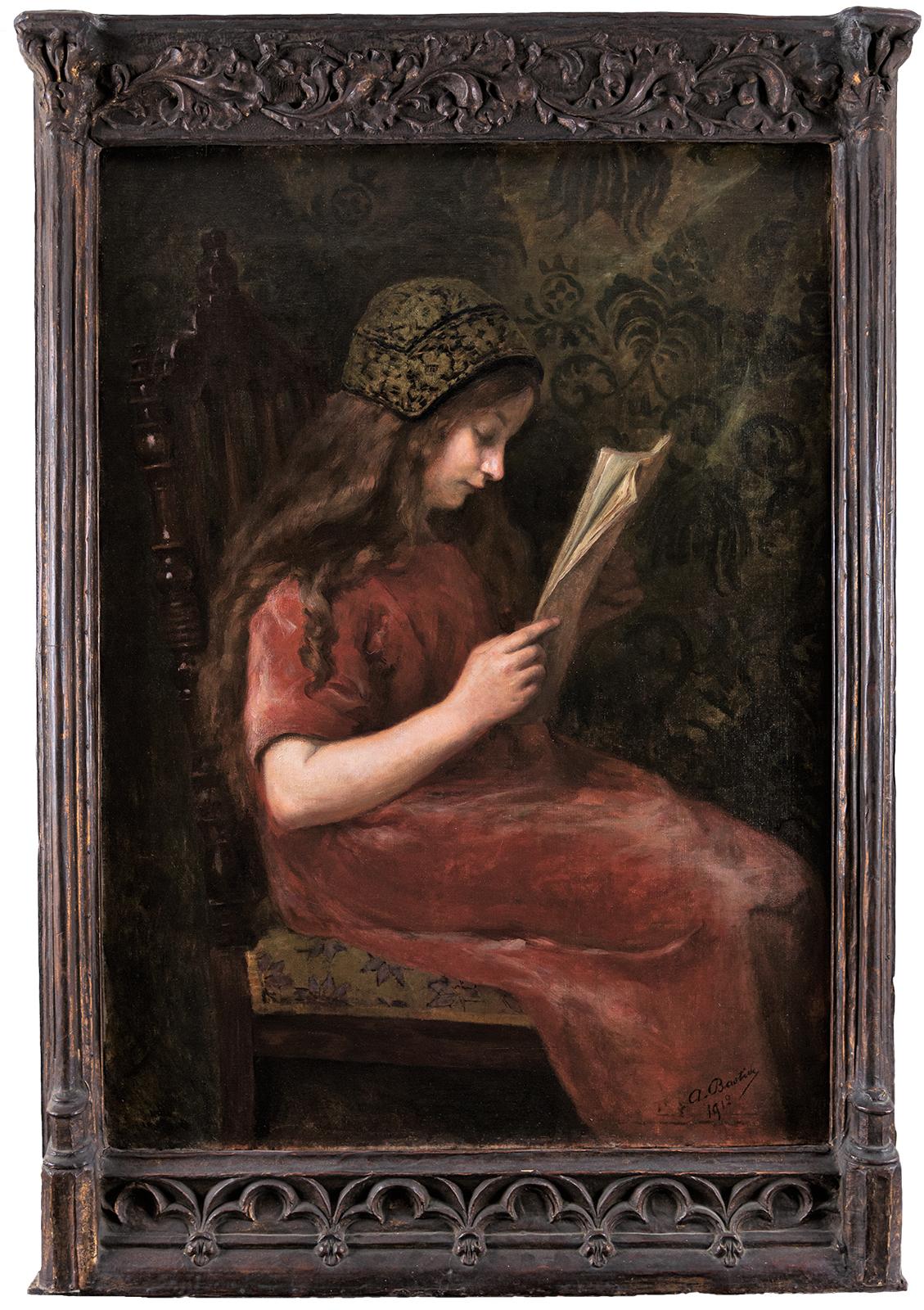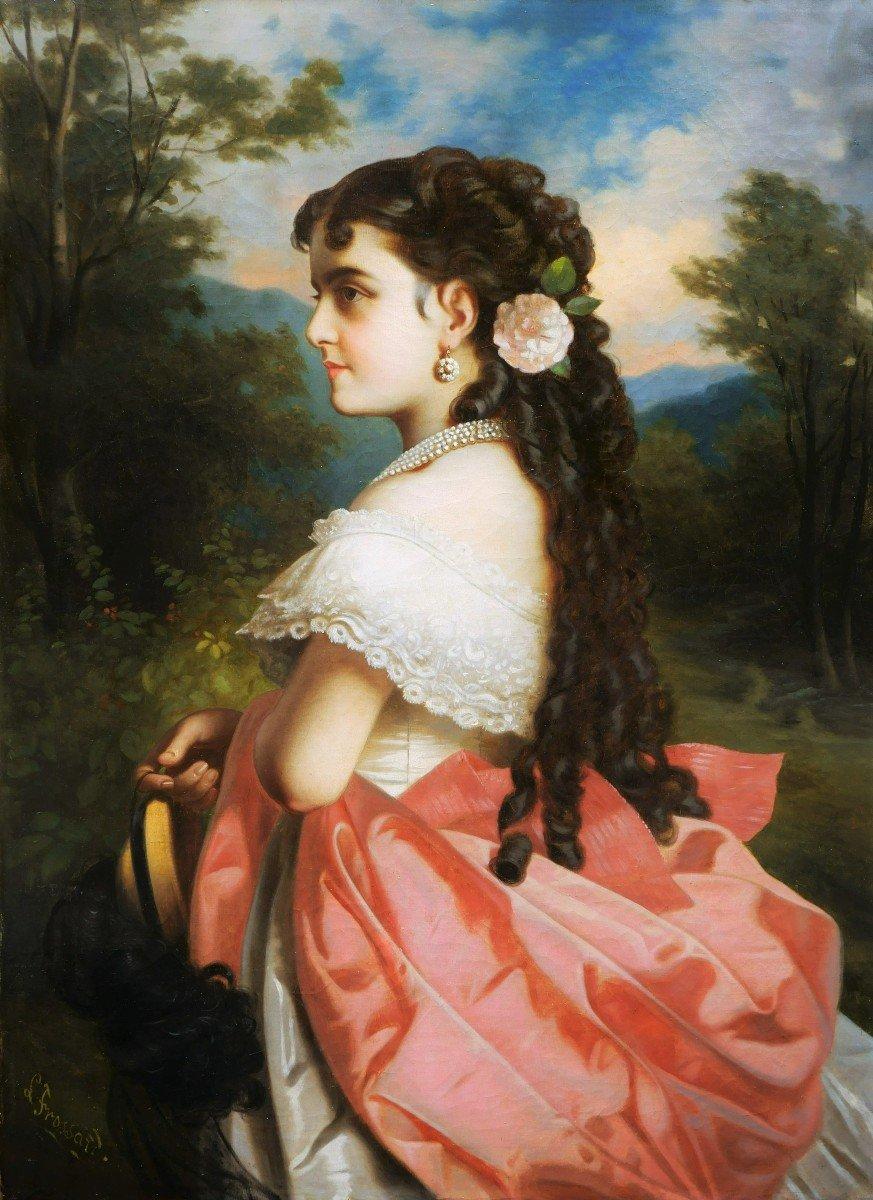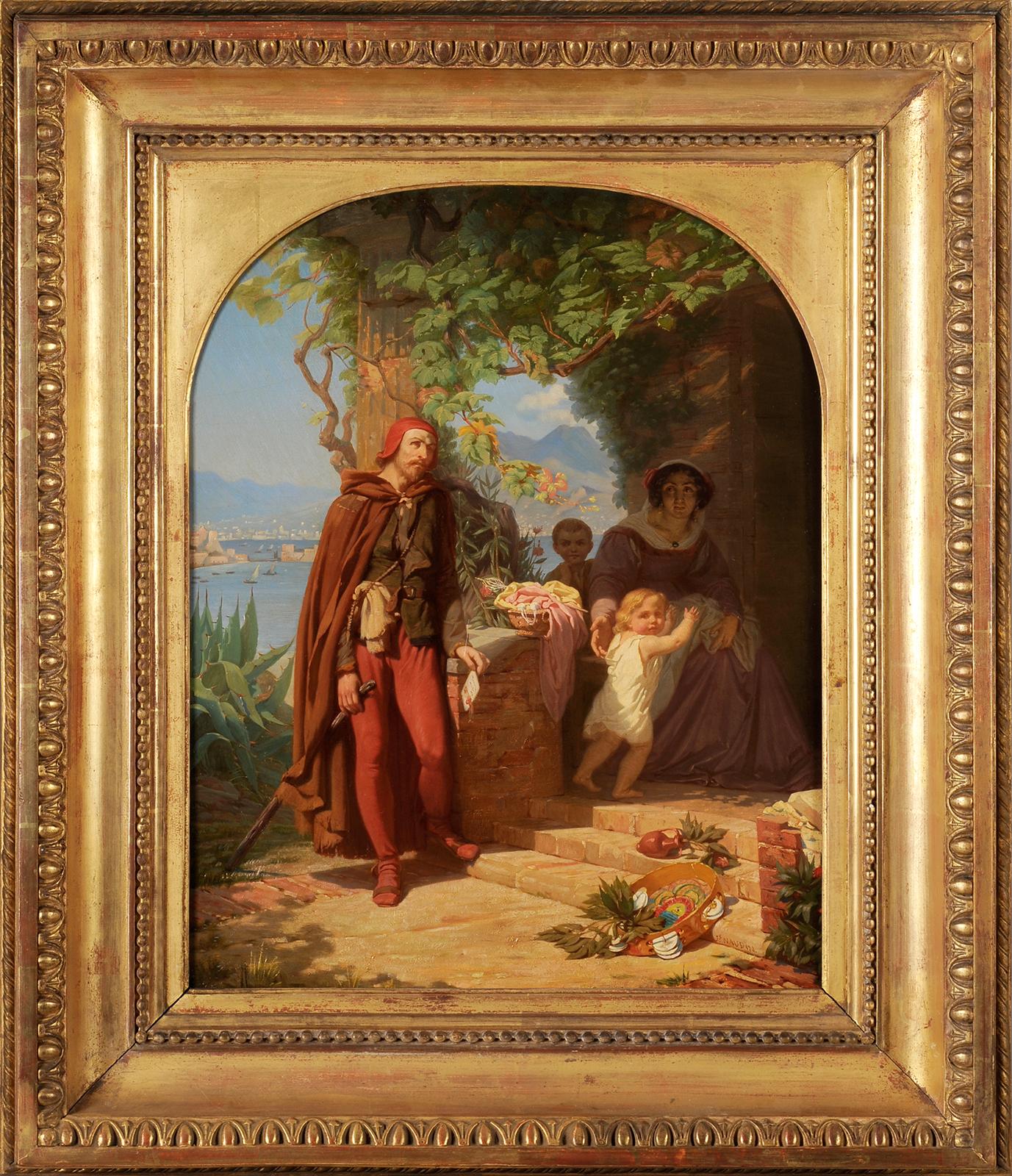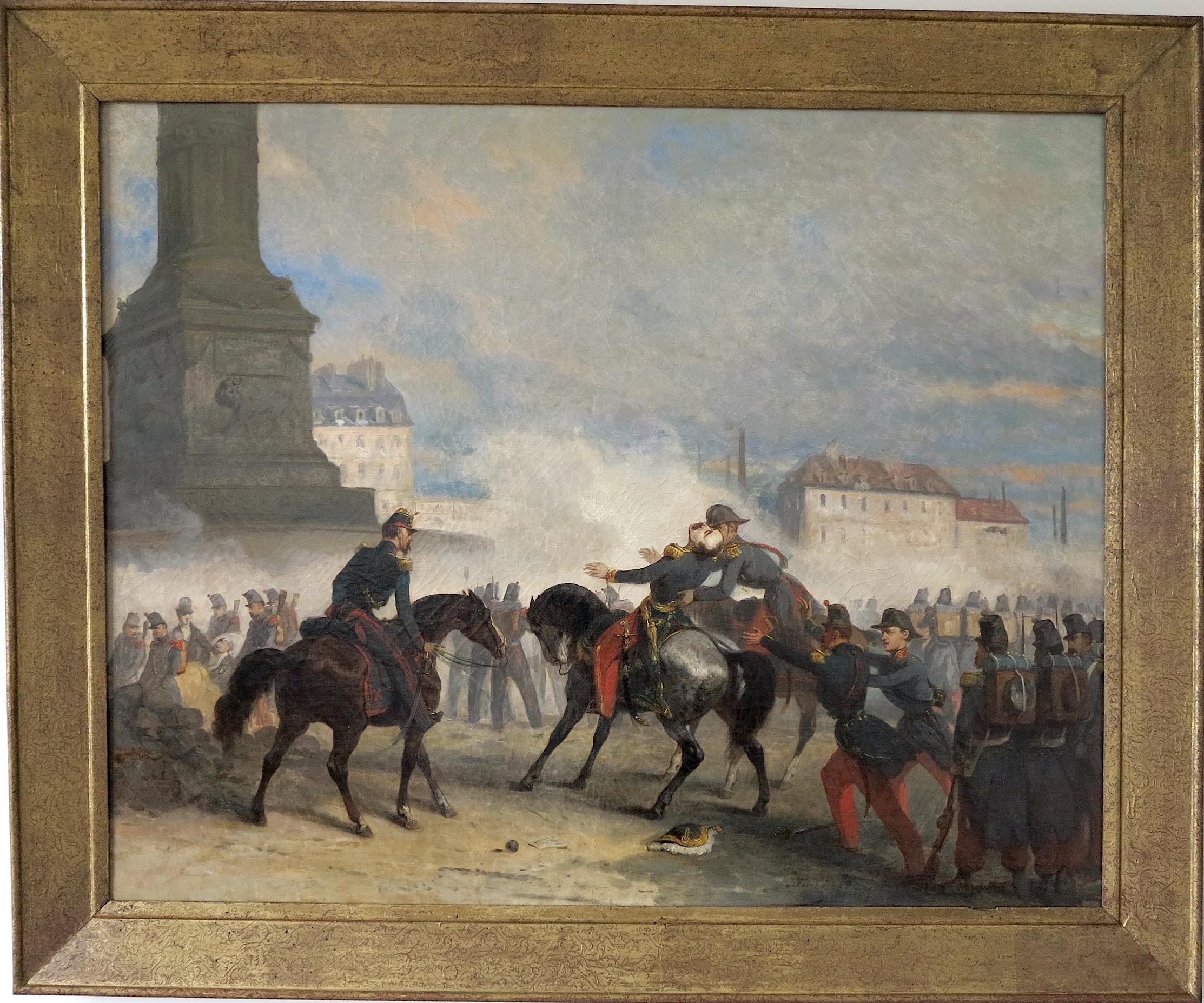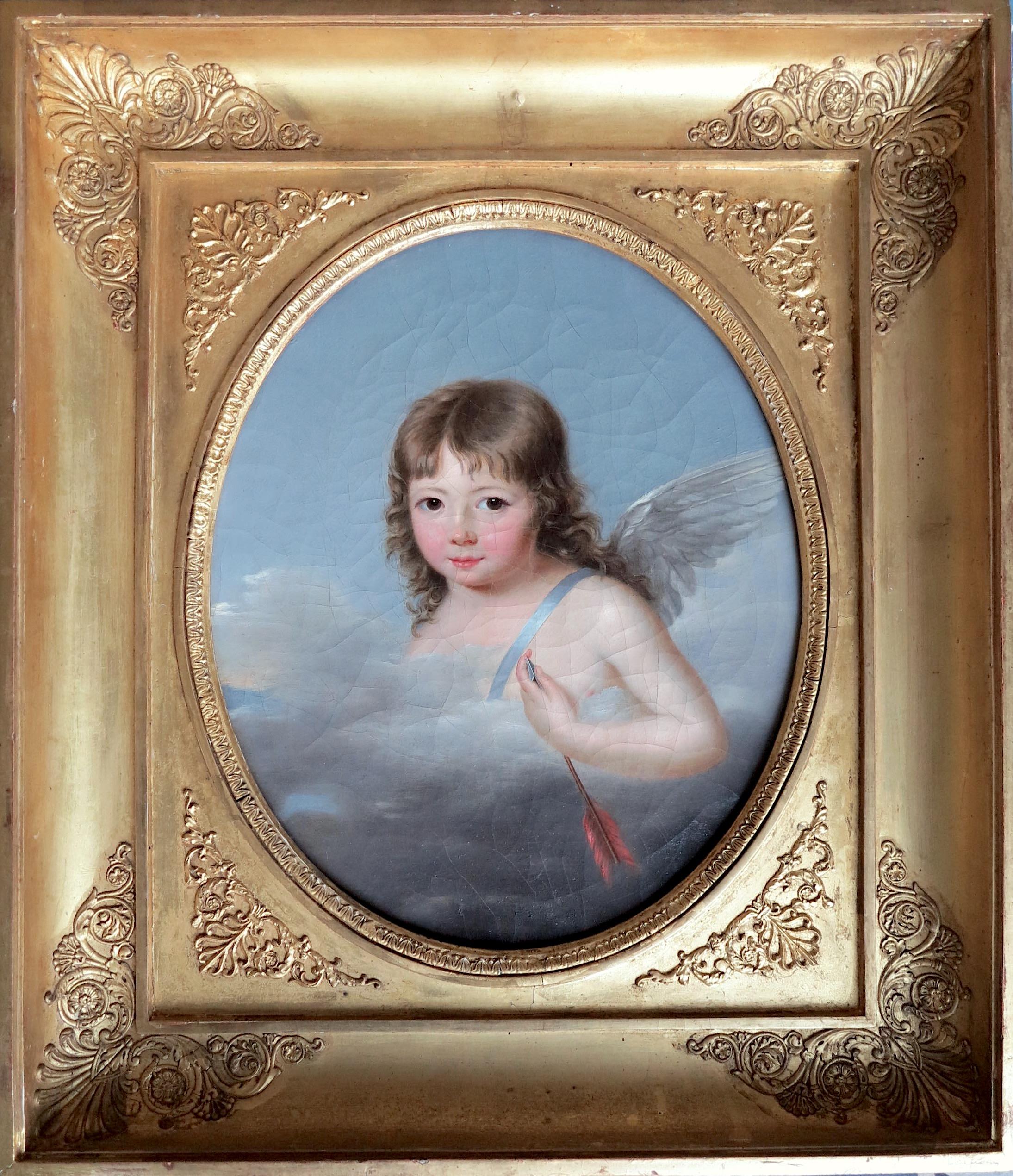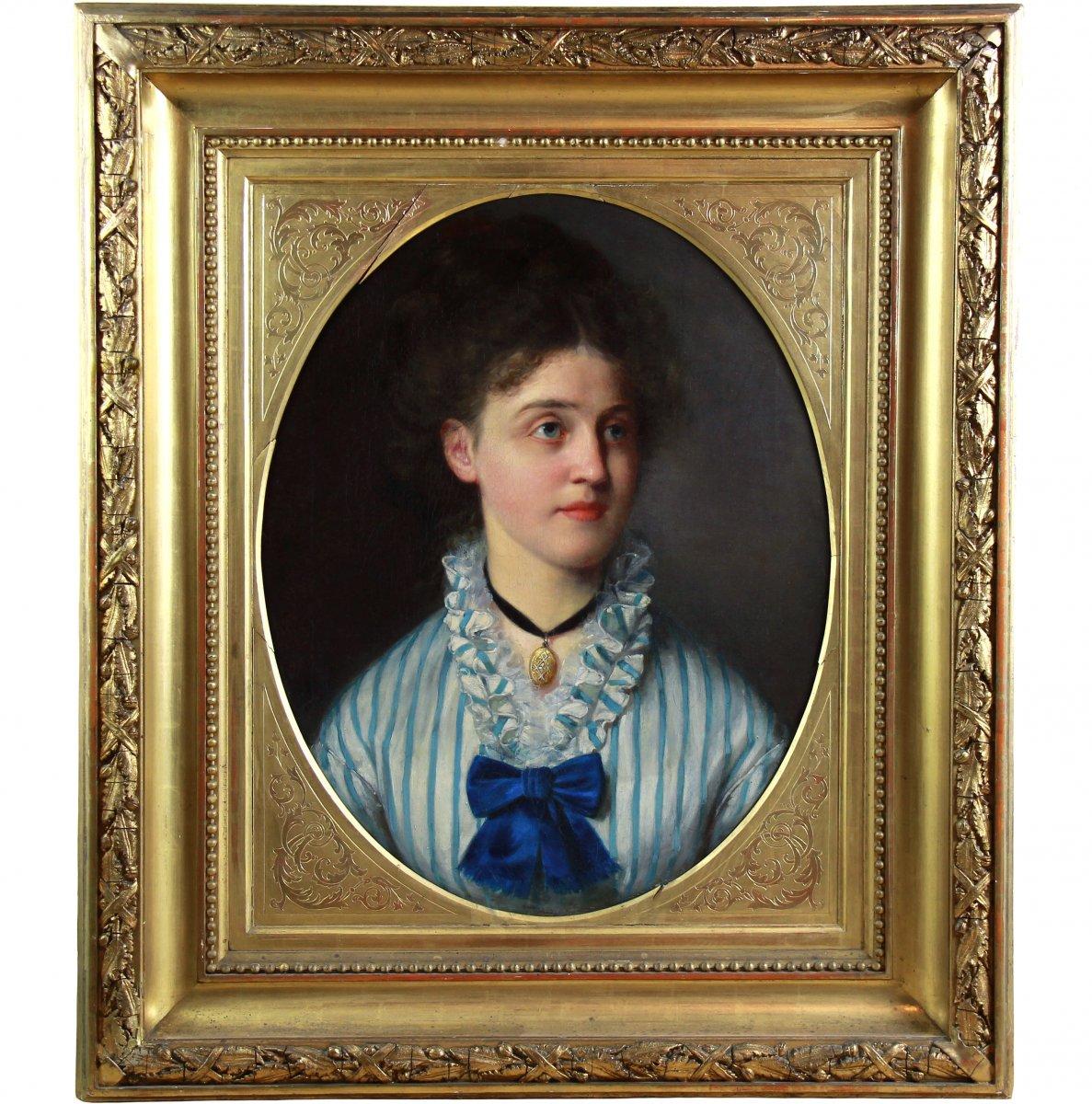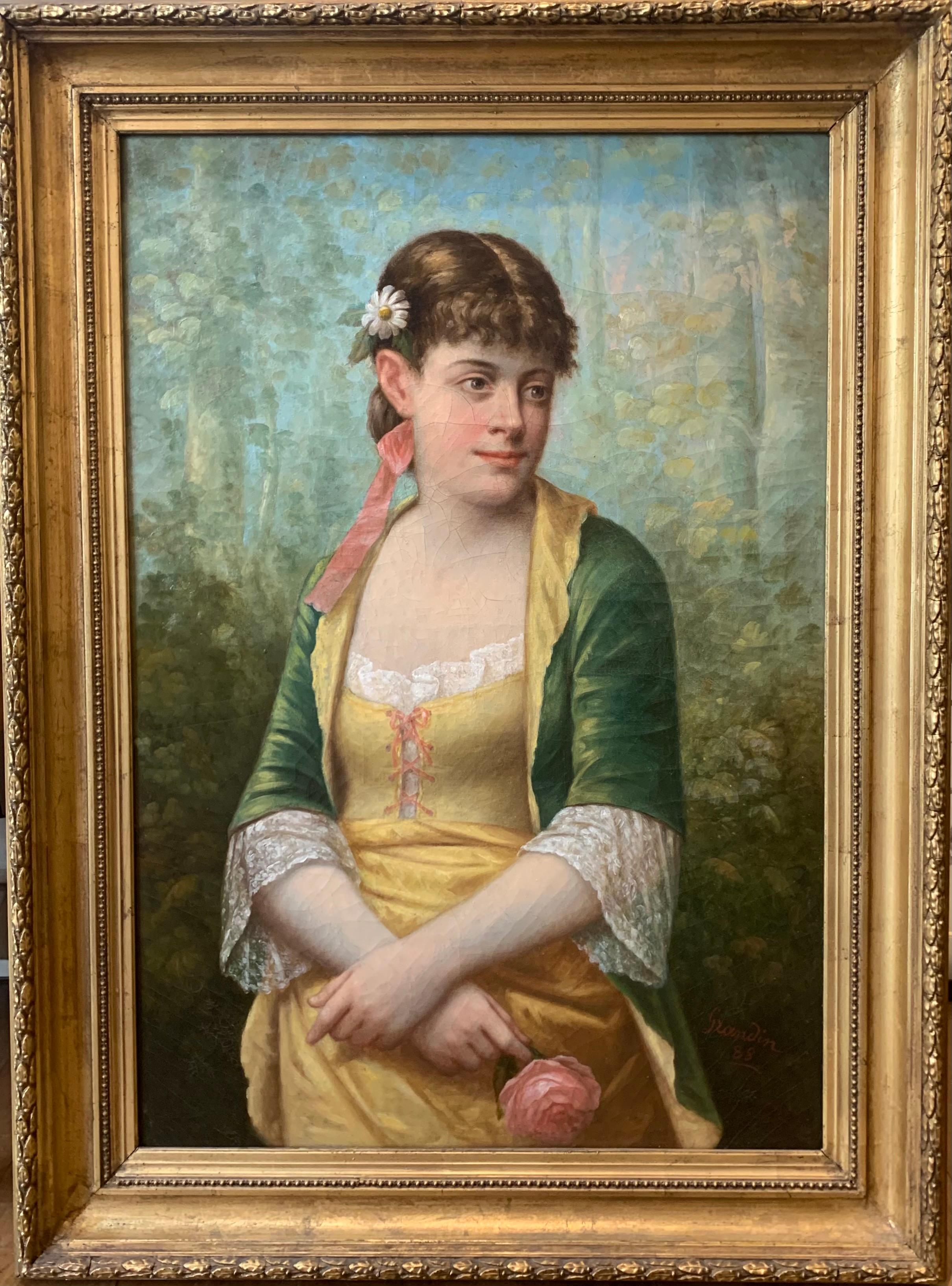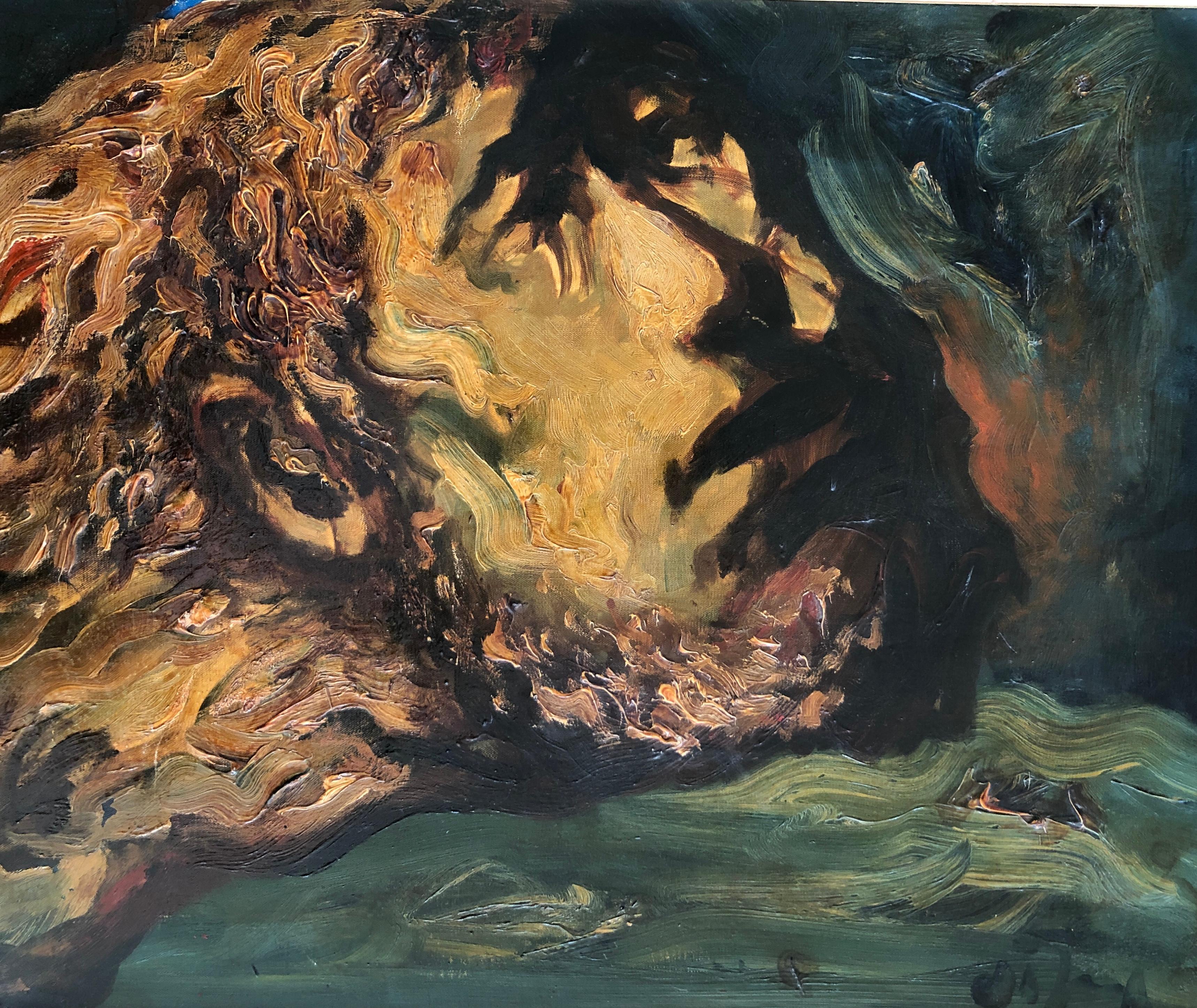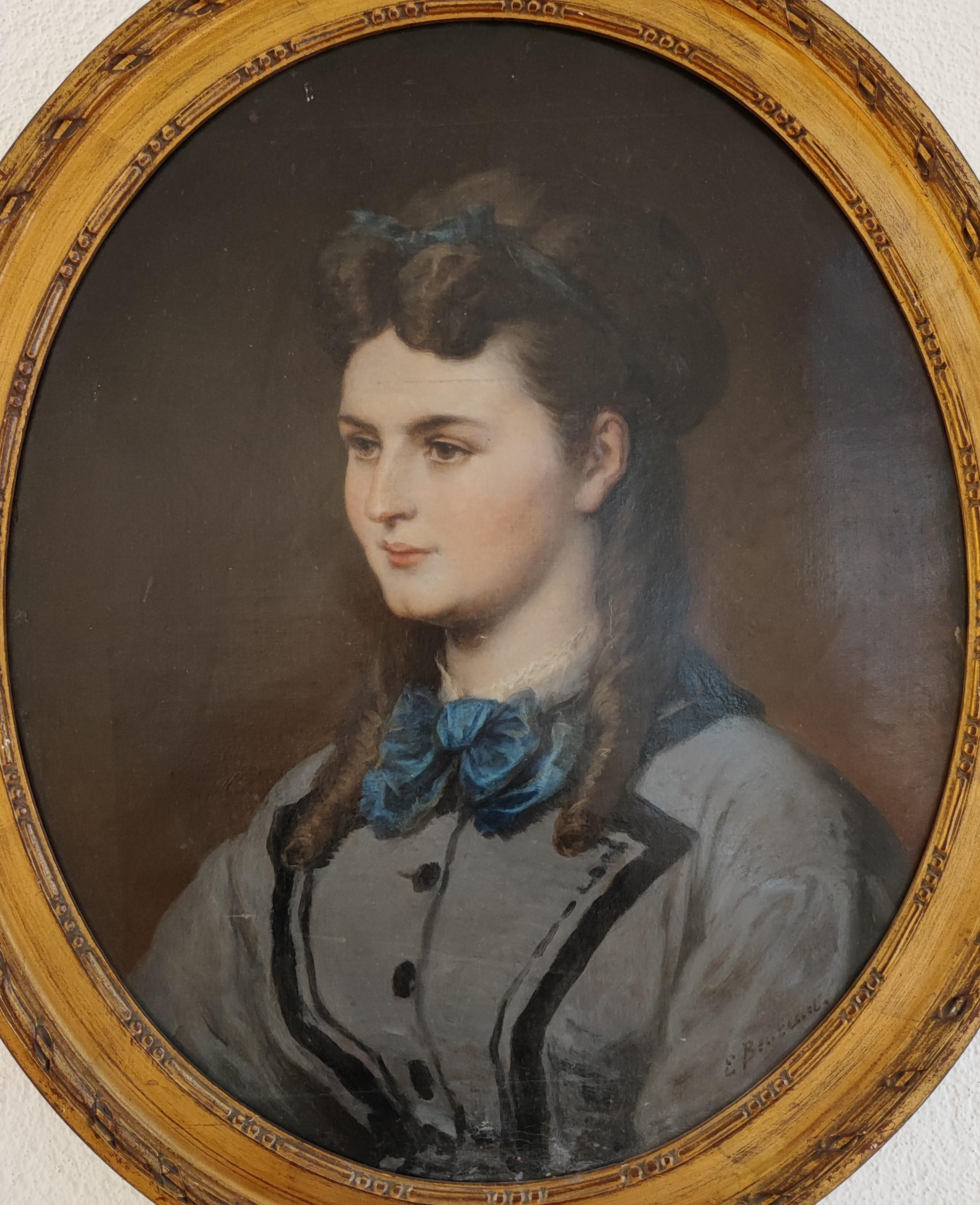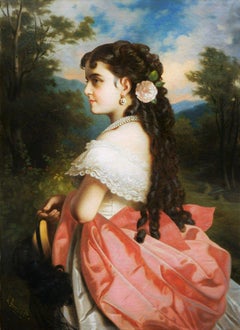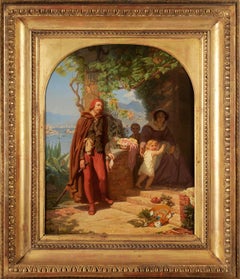Madeleine CARPENTIER (1865-1949) French School Portrait
View Similar Items
Want more images or videos?
Request additional images or videos from the seller
1 of 13
Madeleine CARPENTIER Madeleine CARPENTIER (1865-1949) French School Portrait
About the Item
- Creator:Madeleine CARPENTIER (1865 - 1949, French)
- Dimensions:Height: 13.5 in (34.29 cm)Width: 10 in (25.4 cm)
- Medium:
- Movement & Style:
- Period:
- Condition:
- Gallery Location:Holywell, GB
- Reference Number:Seller: 118031stDibs: LU2445213482392
About the Seller
5.0
Vetted Seller
These experienced sellers undergo a comprehensive evaluation by our team of in-house experts.
Established in 1989
1stDibs seller since 2023
18 sales on 1stDibs
More From This SellerView All
- Albert MANTELET (1858-1958) French School c1900 Oil PaintingBy Albert ManteletLocated in Holywell, GBAlbert MANTELET (1858-1958) A charming portrait of a young woman resplendent in her finest Sunday bonnet. Albert Goguet Mantelet was considered to be one of the most accomplished pupils of Ernest Hébert and Heinrich Lehmann. He painted fashionably attired women from French society. His style achieved critical acclaim and he quickly became an established artist. Throughout his long career he specialised in genre painting. His work can be found in the collections of Musees de Chateau Thierry...Category
Late 19th Century French School Portrait Paintings
MaterialsOil
- Attributed to Isidore-Alexandre-Augustin PILS (1815–1875)By Isidore Alexandre Augustin PilsLocated in Holywell, GBIsidore-Alexandre-Augustin PILS (1815–1875) A bewitching portrait of a young redheaded woman attributed to Isidore Pils. The same sitter appears in another of his other paintings,...Category
1890s French School Portrait Paintings
MaterialsOil
- Charles Joseph VAN LANDUYT (1854-1934) Malvina 1882Located in Holywell, GBA sensitive portrait of Malvina signed, dated 1882 and presented in its original magnificent heavy gilt frame. Van Landuyt was a Belgian School painter who studied at the Royal Aca...Category
1880s French School Portrait Paintings
MaterialsOil
- English School 18th Century Old Master Portrait Dated 1767 Oil PaintingLocated in Holywell, GBEnglish School 18th Century Old Master Portrait Dated 1767. An intriguing painting dating to the mid 18th century bearing a label verso which is indistinct, but appears to read, “Mr...Category
Mid-18th Century Old Masters Portrait Paintings
MaterialsOil
- Louise Jopling (1843-1933) Catalogue Raisonné PortraitBy Louise JoplingLocated in Holywell, GBLouise Jopling (1843-1933) Miss Enthoven A charming portrait of Miss Enthoven, thought to have been exhibited at the Dudley Gallery, London in the winter of 1878 under the title 'Portrait of Nelly - daughter of S Enthoven Esq.' Signed, dated, inscribed verso on the artist’s label and presented in its original kit-kat style frame.. Louise Jopling was one of the most highly regarded portrait artists of her time. Her sitters were the high society glitterati of the late Victorian era. Many examples of her work, for comparison, can be found on the artuk website. I am indebted to Dr Patricia de Montfort, Curator for Whistler Studies at the University of Glasgow for this research and the inclusion of this work in her catalogue raisonné. Credit Wikipedia Louise Jane Goode was born in Manchester, the fifth of the nine children of railway contractor Thomas Smith "T.S." Goode and his wife Frances. She married at seventeen to civil servant Francis "Frank" Romer. The Baroness de Rothschild, a connection of Romer's, encouraged Louise to pursue and develop her art. In the later 1860s, she studied in Paris with Charles Joshua Chaplin and Alfred Stevens, and first exhibited her work at the Salon. She entered works into the Royal Academy shows, 1870–73 (as Louise Romer). After Romer's 1872 death, she married Vanity Fair artist Joseph Middleton Jopling in 1874, who in 1888 was best man at Whistler's wedding to Beatrix Godwin. Of the children from her first marriage only one son, Percy Romer, survived childhood. She had another son, Lindsay Millais Jopling, by her second marriage; the child was named after his two godfathers Sir Coutts Lindsay, founder of the Grosvenor Gallery and John Everett Millais. She achieved fair success in her career: her painting Five O'Clock Tea was sold for £400 in 1874. Her Five Sisters of York was shown at the Philadelphia Exposition in 1876, and her The Modern Cinderella at the Paris Exposition of 1878. Yet she was not immune to the gender discrimination of her time: in 1883 she sought a portrait commission for 150 guineas, but lost it to Sir John Everett Millais, who was paid 1000 guineas for the same project. Jopling exhibited her work at the Palace of Fine Arts and The Woman's Building at the 1893 World's Columbian Exposition in Chicago, Illinois. She joined the Society of Women Artists (1880) and the Royal Society of Portrait Painters (1891); she became the first woman to be admitted to the Royal Society of British Artists (1901). During the years of her marriage with Jopling, she became the primary earner of the family. It is said that, "She found this responsibility weighty and stressful, necessitating constant production, regular sales and a continual search for commissions and clients. In 1879, despite her own illness and that of her son Percy, she produced eighteen works." Social life Jopling "painted portraits of titled sitters, wealthy financiers and actresses" and, to operate in this social milieu, she maintained a fashionable lifestyle, with a Chelsea studio at 28 Beaufort Street, designed by William Burges. She moved in a social circle that included James McNeill Whistler, Oscar Wilde, Kate Perugini (née Dickens) and Ellen Terry. Augustus Dubourg dedicated his 1892 play Angelica to her. In 1887 the society magazine The Lady’s World described her social circle, One year we have her portrait, magnificently sketched by Millais, adorning the walls of the Grosvenor; next season she figures as the heroine of a ‘society’ novel from the pen of a popular writer. One week we see her salon drawn by Mr. Du Maurier in Punch, with sketches from the life of herself and her friends; the week after she appears under another name as the heroine of one of those quasi-malicious town and country tales which amuse the readers of a society paper… Over the mantelpiece hangs the portrait, by her old friend Sir John Millais...Category
1870s Victorian Portrait Paintings
MaterialsOil
- Daniel De CONING (1660-1727) Portrait of a Cotswold GentlemanLocated in Holywell, GBA magnificent portrait of Henry Izod aged 67 in 1726, unsigned, but attributed verso to De Coning. Presented in a delightful frame probably the original. Th...Category
1720s Old Masters Portrait Paintings
MaterialsOil
You May Also Like
- Woman with Lobsters / "Femme et Homards"By Andre MinauxLocated in Berlin, MDAndre Minaux (French 1923 - 1986) "Femme et Homards" / Woman with Lobsters. Oil on canvas. Features a young woman holding one lobster while two others sit on a counter before her. ...Category
Mid-20th Century French School Portrait Paintings
MaterialsCotton Canvas, Oil
- Portrait of singer Adelina Patti - L. Frossard - OperaLocated in BELEYMAS, FRL. FROSSARD (active in Vienna around 1870) Portrait of Adelina Patti (1843-1919) Oil on canvas H. 100.5 cm; L. 73.5 c Signed lower left If the artist maintains a certain discretion ...Category
1860s French School Figurative Paintings
MaterialsCanvas, Oil
- Jules Naudin (1817-c.1876) - Tasso arriving at his sister's house in SorrentoBy Attilio ManganaroLocated in BELEYMAS, FRJules Ambroise Francois NAUDIN (Paris 1817 – c.1876) Tasso arriving at his sister's house in Sorrento Oil on canvas H. 49 cm; L. 37.5 cm Signed lower right Exhibition: 1852, Paris Salon, under number 959 Related work: Engraving by Jean-Denis Nargeot in 1852 Bibliography: L’Illustration, April 24, 1852, engraved by Best, Hottelin and Regnier, after a drawing by Valentin) and reproduced p.260, cited p.262; La Mode: Political, Religious and Literary Review, 1852, quoted; Journal des Demoiselles...Category
1850s French School Figurative Paintings
MaterialsCanvas, Oil
- Young girl readingLocated in BELEYMAS, FRAlice BASTIDE (Saint Mandé 1868 – Paris 1959) Portrait of a little girl reading Oil on canvas H. 100 cm; L. 72.5 cm Signed lower right and dated 1912 Daughter of a pastor from Gard and an English woman, Alice Bastide grew up in Paris. A pupil of the Jullian Academy, she began her apprenticeship under the guidance of Henri Royer and François Schommer. The development of his art is mainly oriented towards still lifes, without completely abandoning portraits and landscapes. Her other specialty for which she received numerous awards is miniatures. At the Salon of 1914 she received the Maxime David prize crowning the best piece while her finesse was already noticed by press critics from 1907. Coronation, in 1926 she received a gold medal at the Salon for her miniature Coquetterie. In 1896, the young woman married a man from Gard, Auguste Massebiaux, whose name she would occasionally bear. The latter, a lawyer at the Paris Court of Appeal, died in 1910. The couple had no children. At that time she was domiciled at 48 avenue d'Orléans (later named avenue du general Leclerc) in Paris where she lived until her death in 1959. Until the mid-1930s she continued to exhibit at the Salon des Artistes French with a manner very close to Impressionism, luminous and vigorous. In 1912, two years after the death of her husband, Alice Bastide was certainly still marked by the sadness of her mourning. The tones of our portrait of a little girl and the frame she puts together are dark and heavy. This child, wearing an embroidered bonnet, is bent over her book, her loose hair flowing over a red velvet indoor dress. This intimate portrait on a dark tapestry...Category
1910s French School Figurative Paintings
MaterialsOil, Canvas
- The death of General Négrier on Place de la Bastille, Paris - FranceBy Nicolas Edward GabéLocated in PARIS, FRNicolas Edward GABE (Paris, 1814 - Paris, 1865) The death of General Négrier on Place de la Bastille on June 25, 1848 Oil on canvas Signed and dated lower right 82 x 101 cm 1849 Nicolas Edward Gabé is a 19th century artist who is still little studied to this day and yet seems to have enjoyed, according to the artistic press of the time, a certain notoriety, in particular for his seascapes. The few bibliographical elements that we have come from the Salon booklets and tell us that the artist was born in Paris in 1814, therefore shortly before the end of the Empire. No elements on his artistic training are mentioned in the booklets, we just know that Gabé exhibited at the Paris Salon from 1835 to 1864 where he first practiced miniature then then approached easel painting, risking himself as well in still life that the seascapes, the landscape, the portrait or the hunting. According to press articles, he also took part in various exhibitions in the provinces such as Boulogne-sur-Mer and Marseille. Notably, Gabé did not exhibit at the Salon his large historical canvases on the revolution of 1848, which today are of obvious documentary and iconographic interest; probably for political reasons which are easily understandable to us today in view of the historical events of then. Gabé died in Paris at the age of 51 on January 4, 1865 with a mention in the January 7, 1865 edition of L'Union des Arts: “The death of Mr. Gabé, painter, well known in the export trade in paintings as well as to the auctioneers' hotel, whose sales it supplied through its numerous navies. “ "On June 25, 1848, in front of the barricades erected in the Bastille by the insurgents of the Red Republic, General Négrier fell to death, while he was uttering words of order and conciliation". Here are the opening lines of the tribute paid by Colonel Borgarelli d´Ison, friend of General Négrier. General Négrier belonged to a family from Maine, brought back by Marshal Lannes from emigration. Born in Le Mans on April 27, 1788, François Marie Casimir de Négrier entered, barely 18, as a volunteer in the 2nd Light Infantry Regiment. He began in 1806 with the campaigns of Prussia and Poland, during which he earned, through his bravery, the rank of sergeant and the decoration of the Legion of Honor. He made the following campaigns in Spain and Portugal, and left, with his regiment, only for the campaign of France, in 1814, after having risen successively, by actions of brilliance and by a serious wound, to the ranks of head of battalion and officer of the Legion of Honor, with which he was provided from October 1813. The Restoration retained his rank in his regiment. After having fought and wounded a second time seriously in Waterloo, Négrier was recalled in 1816 under the second Restoration. He was appointed, in 1825, lieutenant-colonel, then colonel in 1830, brigadier general in 1836, and of division in 1841. From March 1837 he participated in the conquest of Algeria. The Revolution of 1848 found Negrier in possession of the important command of the 16th Military Division in Lille. Quaestor of the Assembly in these times which promised to be troubled, Négrier reviewed the Place de la Concorde on June 23 at around noon various mobile guard battalions. He then took the head of 2,000 men provided by the 10th and 11th legions of the national guard and bivouacked on the Place du Palais until the next day 24. On Sunday 25 at nine o'clock, the Négrier division resumed the fight towards the Saint suburb. -Antoine. The troop gains continual advantages. At around two o'clock the column of Négrier had seized the Pont Marie: it had removed the barricades from the Quai Saint-Paul, the rue de l'Etoile, the rue des Barres...Category
Mid-19th Century French School Figurative Paintings
MaterialsOil
- CupidBy François Pascal Simon GérardLocated in PARIS, FRFrench School of the early 19th century Circle of Baron GERARD (1770-1835) or Circle of Élisabeth Louise VIGÉE-LEBRUN (Paris, 1755 – Paris, 1842) Cupid ...Category
Early 19th Century French School Portrait Paintings
MaterialsOil
$6,005

